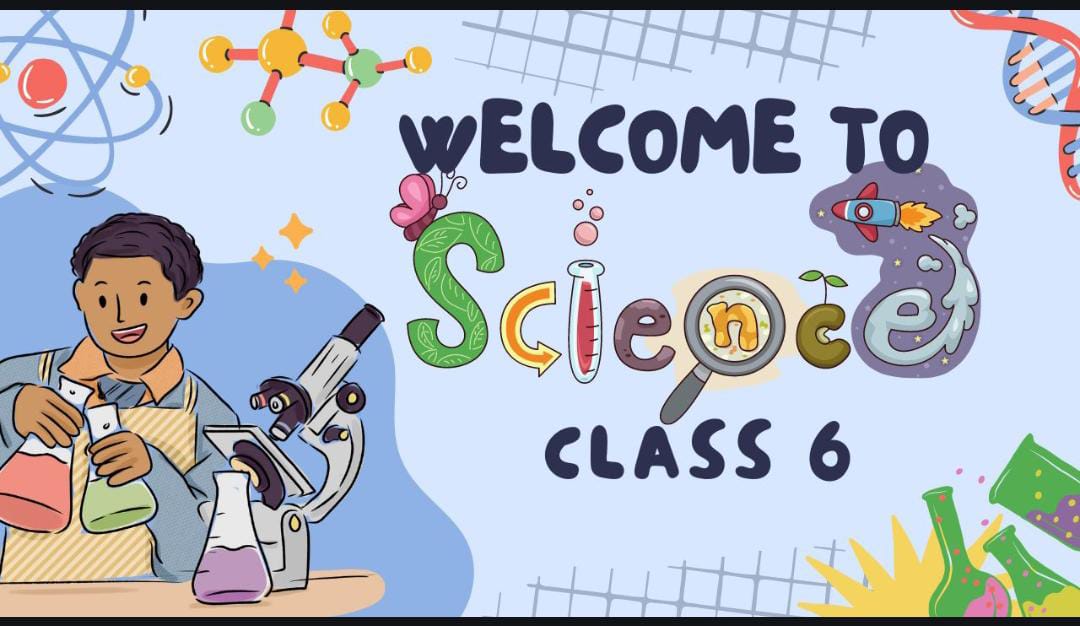NCERT Class VI – Science

About Course
The NCERT Class 6 Science curriculum provides a foundational understanding of various scientific concepts in a way that is accessible and engaging for young learners. It introduces students to basic principles of science through interactive and practical approaches. Here’s a brief overview of what is covered:
### **1. Food: Where Does It Come From?**
– **Concepts:** Sources of food, plant and animal products, and the importance of a balanced diet.
– **Topics:** Different types of food, how food is obtained, and the role of various food items in maintaining health.
### **2. Components of Food**
– **Concepts:** Nutrients and their functions, food groups, and the importance of a nutritious diet.
– **Topics:** Carbohydrates, proteins, fats, vitamins, and minerals, and how they contribute to our health.
### **3. Fibre to Fabric**
– **Concepts:** Origin of fabrics, types of fibers, and the process of fabric production.
– **Topics:** Natural and synthetic fibers, weaving, spinning, and dyeing.
### **4. Sorting Materials into Groups**
– **Concepts:** Classification of materials based on their properties.
– **Topics:** Properties such as appearance, hardness, solubility, and density, and how materials are grouped accordingly.
### **5. Separation of Substances**
– **Concepts:** Methods for separating mixtures based on physical properties.
– **Topics:** Techniques like filtration, evaporation, and sieving, and their applications.
### **6. Changes Around Us**
– **Concepts:** Physical and chemical changes, and the effects of these changes on materials.
– **Topics:** Examples of everyday changes, distinguishing between reversible and irreversible changes.
### **7. Getting to Know Plants**
– **Concepts:** Plant structure and functions.
– **Topics:** Parts of plants, their functions, and types of plants.
### **8. Body Movements**
– **Concepts:** Human and animal movement.
– **Topics:** Types of joints, skeletal system, and movement in different animals.
### **9. The Living World**
– **Concepts:** Characteristics of living organisms.
– **Topics:** Differences between living and non-living things, and basic needs of living organisms.
### **10. Motion and Measurement of Distances**
– **Concepts:** Measurement and basic motion.
– **Topics:** Units of measurement, tools for measuring distance, and concepts of speed and motion.
### **11. Light, Shadows, and Reflections**
– **Concepts:** Nature of light and its behavior.
– **Topics:** Formation of shadows, reflection of light, and the concept of mirrors.
### **12. Electricity and Circuits**
– **Concepts:** Basics of electricity and simple circuits.
– **Topics:** Electric current, components of a circuit, and how electrical devices work.
### **13. Fun with Magnets**
– **Concepts:** Properties of magnets and their applications.
– **Topics:** Types of magnets, magnetic fields, and uses of magnets in everyday life.
### **14. Water**
– **Concepts:** Water in nature and its properties.
– **Topics:** Water cycle, importance of water, and different forms of water.
### **15. Air Around Us**
– **Concepts:** Composition and importance of air.
– **Topics:** Air as a mixture, its properties, and how it affects our environment.
### **16. Garbage In, Garbage Out**
– **Concepts:** Waste management and recycling.
– **Topics:** Types of waste, methods of disposal, and the importance of reducing and recycling waste.
The NCERT Class 6 Science textbook is designed to foster curiosity and a love for science by incorporating experiments, illustrations, and real-life applications. It encourages students to explore and understand the natural world through observation, experimentation, and discussion.
Course Content
Chapter 1 – Food: Where Does it Come From?
Chapter 2 -Components of Food
Chapter 3 – Fibre to Fabric
chapter 4 – Sorting Materials into Groups
Chapter 5 – Separation of Substances
Chapter 6 – Changes Around Us
Chapter 7 – Getting to Know Plants
Chapter 8 – Body Movements
Chapter 9 – The Living organisms: Characteristics and Habitats
Chapter 10 – Motion and Measurement of Distances
Chapter 11 – Light, Shadows, and Reflections
Chapter 12 – Electricity and Circuits
Chapter 13 – Fun with Magnets
Chapter 14 – Water
Chapter 15 – Air Around Us
Chapter 16 – Garbage In, Garbage Out
Student Ratings & Reviews
